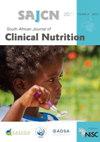埃塞俄比亚东南部贝尔区罗布镇家庭充足碘盐供应及其相关因素:基于社区的横断面研究
IF 0.6
Q4 NUTRITION & DIETETICS
引用次数: 5
摘要
背景:碘是人体所需的微量营养素,用于预防碘缺乏症(IDD),这是一个全球公共卫生问题。在研究地区,没有足够碘化盐的家庭水平的具体数据。因此,本研究旨在评估埃塞俄比亚东南部贝尔罗布的家庭水平上充足碘化盐的可用性及其相关因素。方法:2015年4月,在埃塞俄比亚东南部贝尔区Robe镇进行了一项基于社区的横断面研究。数据是通过访谈者管理的问卷从367个家庭中收集的,这些家庭是通过系统随机抽样确定的。使用家庭一级的快速检测试剂盒估计了盐碘含量。使用描述性统计来确定患病率,并使用双变量和多变量逻辑回归来计算因变量和自变量之间的相关性。p值<0.05用于确定统计学显著性。结果:在374个样本中,370名受访者接受了访谈,回答率为99%。三分之一(32.7%)的家庭使用了充足的碘盐。受访者的教育状况、接触如何处理碘盐的信息以及受访者使用的盐类型是在家庭层面获得足够碘盐的独立因素。储存在干燥地方的盐具有足够碘含量的可能性是储存在高湿度区域或火灾附近的盐的两倍(AOR = 2.13,CI = 1.19–3.72)。结论:在家庭水平上,充足碘化盐的可用性非常低。与家庭水平获得足够碘化盐相关的因素包括教育水平、受访者的年龄和盐的储存地点,并对家庭是否充分碘化盐产生影响。埃塞俄比亚东南部Bale Robe区需要制定策略,教育居民适当的储存条件,以最大限度地减少碘盐中的碘损失。本文章由计算机程序翻译,如有差异,请以英文原文为准。
Availability of adequately iodised salt at household level and its associated factors in Robe town, Bale Zone, South East Ethiopia: community-based cross-sectional study
Background: Iodine is a micronutrient required by the body in small amounts to prevent iodine deficiency disorder (IDD), which is a global public health concern. There were no specific data at household level of adequately iodised salt in the study area. Thus this study aimed to assess availability of adequately iodised salt and its associated factors at household level in Bale-Robe, South East Ethiopia. Methods: A community-based cross-sectional study was conducted in Robe town, Bale Zone, South East Ethiopia in April 2015. Data were collected through interviewer-administered questionnaires from a total of 367 households, which were identified through systematic random sampling. Salt iodine content was estimated using rapid testing kits at the household level. Descriptive statistics was used to determine the prevalence, and association between dependent and independent variables was computed by using bivariate and multivariable logistic regression. A p-value of < 0.05 was used to determine statistical significance. Results: Of 374 samples, 370 respondents were interviewed yielding a response rate of 99%. One-third (32.7%) of the household levels used adequately iodised salt. Respondents’ educational status, exposure to information on how to handle iodised salt and type of salt used by the respondents were independent factors for availability of adequately iodised salt at the household level. Salt that had been stored in a dry place was twice as likely to have an adequate iodine content compared with salt stored in a high-moisture area or near a fire (AOR = 2.13, CI = 1.19–3.72). Conclusion: Availability of adequately iodised salt at the household level was very low. Factors that were associated with household levels’ access to adequately iodised salt included educational level, age of the respondents and place where salt is stored, and had an effect on whether households iodise salt adequately. Strategies to educate residents regarding the appropriate storage conditions to minimise iodine losses in iodised salt are required in Bale-Robe district of South East Ethiopia.
求助全文
通过发布文献求助,成功后即可免费获取论文全文。
去求助
来源期刊

South African Journal of Clinical Nutrition
NUTRITION & DIETETICS-
CiteScore
2.50
自引率
9.10%
发文量
21
期刊介绍:
1.The Journal accepts articles from all basic and applied areas of dietetics and human nutrition, including clinical nutrition, community nutrition, food science, food policy, food service management, nutrition policy and public health nutrition. 2.The Journal has a broad interpretation of the field of nutrition and recognizes that there are many factors that determine nutritional status and that need to be the subject of scientific investigation and reported in the Journal. 3.The Journal seeks to serve a broad readership and to provide information that will be useful to the scientific community, the academic community, government and non-government stakeholders in the nutrition field, policy makers and industry.
 求助内容:
求助内容: 应助结果提醒方式:
应助结果提醒方式:


